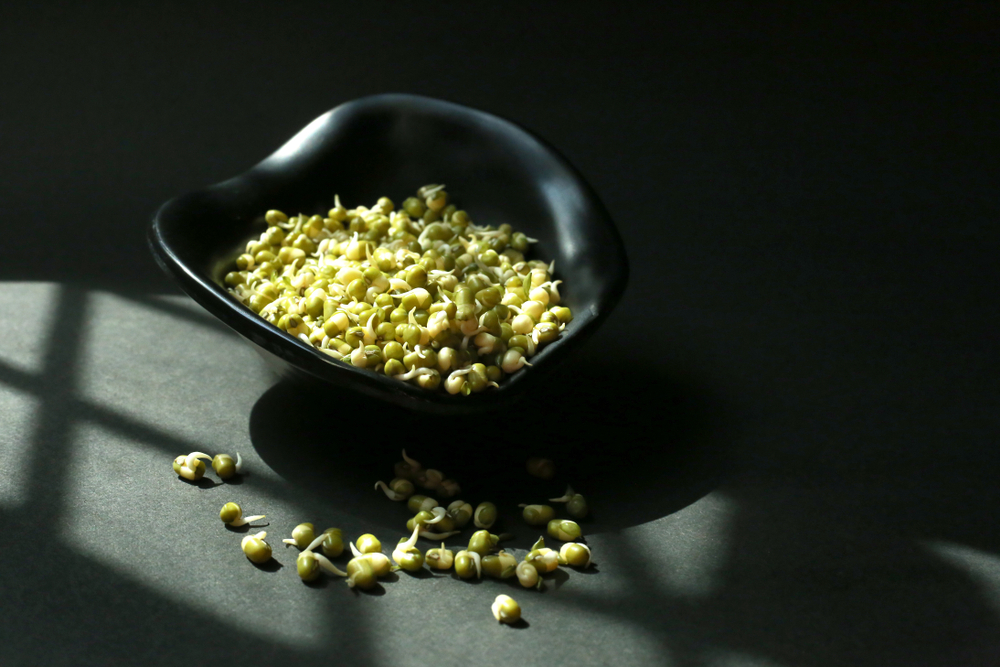Bean sprouts that you find in supermarkets are likely mung bean sprouts, which are commonly used in various Asian cuisines. You can also find it in East Africa and Central America. Mung beans have nearly cylindrical shape and bright green skin. They can also be hulled and split, when you look for them in supermarkets. Mung beans have soft consistency and you can cook them quite fast. In Japan, blackgram sprouts are more preferred than mung beans sprouts, because they last longer on shelves and have brighter color. In China, small soybean sprouts are more popular, while in the United States, alfalfa sprouts can be easily found in specialty stores and supermarkets. You can eat mung bean sprouts fresh in salad or sandwich. However, you can also stir fry and boil mung beans as well.
When mung beans are sprouted, they change nutritionally. From 100 grams of raw mung beans, they go to 313 calories from 384 calories. Carbohydrates go down to 58.8 grams from 67 grams. Fat and protein contents are also reduced somewhat. However, the amount of mineral increases significantly. You should rinse mung bean sprouts thoroughly and cull them before soaking. Be on the lookout for unsprouted mung beans. Even if you get your mung beans from reputable sources, there’s still a chance a few beans don’t sprout. Mung beans don’t get soft, no matter how long you soak it. One good way is to grab bean sprouts and put them on a pan. Unsprouted beans will “clink” and you can separate them quite easily.
When sprouts start to grow for about ½ inches, you may already consume them. Bug mung sprouts can have up to 3-inch of roots. Be aware of sprouts that have exceptionally thick roots and big stems. They can be grown with gasses and chemicals to encourage accelerated growth. However, you can get thick roots using a safer way, such as using a sprouter in the growing process. So, it is important to get sprouts from reputable sources. Another option is to grow mung beans sprout yourself. A small bag of mung beans can give you quite a lot of sprouts that can last for a week. When growing sprouts at home, make sure that you have the right tools. If you do something wrongly, it is possible that you disturb the growth of sprouts. Beans should be stationary during the growth process. Make sure that you have a solid platform, so growing beans won’t move.
It is also a good idea to make sure that you use lower water pressure to ensure more consistent growth of the sprouts. Depending on your methods and situation, you can start harvesting your sprouts after 24 to 36 hours. After harvesting, you should rinse bean sprouts thoroughly.It is best to use sprouts immediately. Freshly harvested mung bean sprouts are the most consumed variant of sprouts. Asian countries are using them extensively. They are cheap and very nutritious. They can be used for salad, stir fried dishes, soups and fillings. You can find hundreds of recipes online that use mung bean sprouts.





